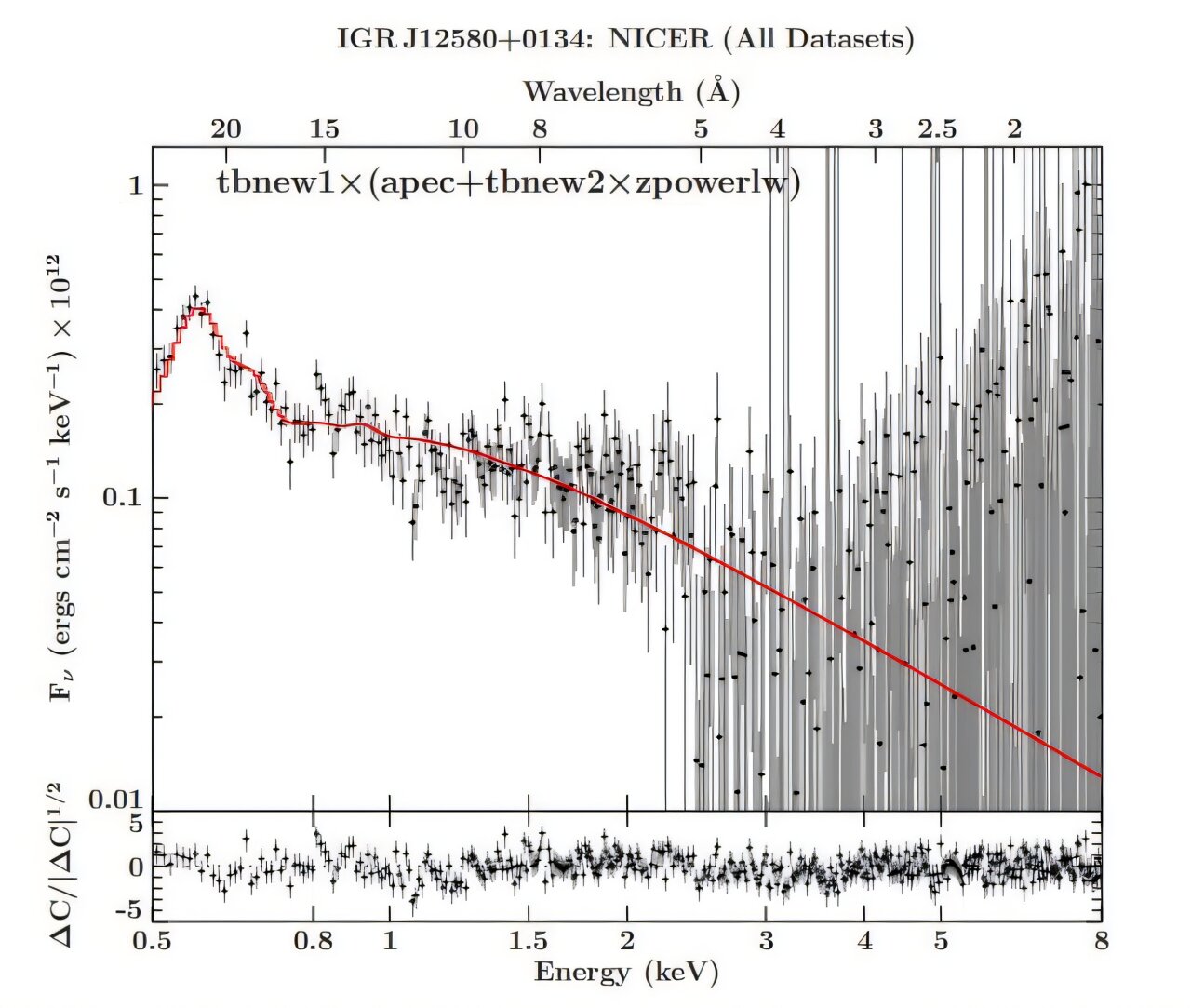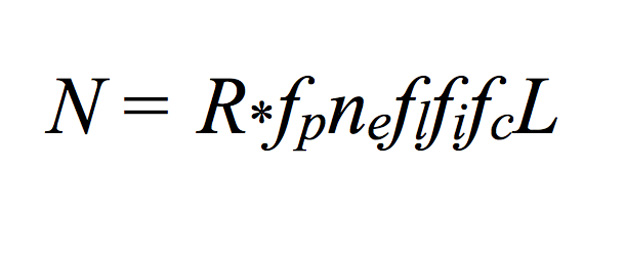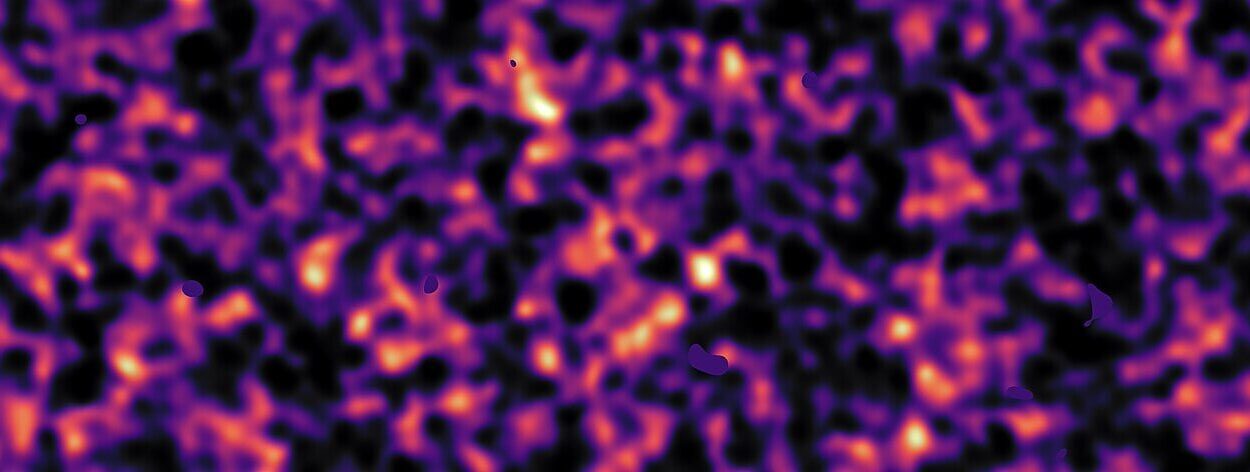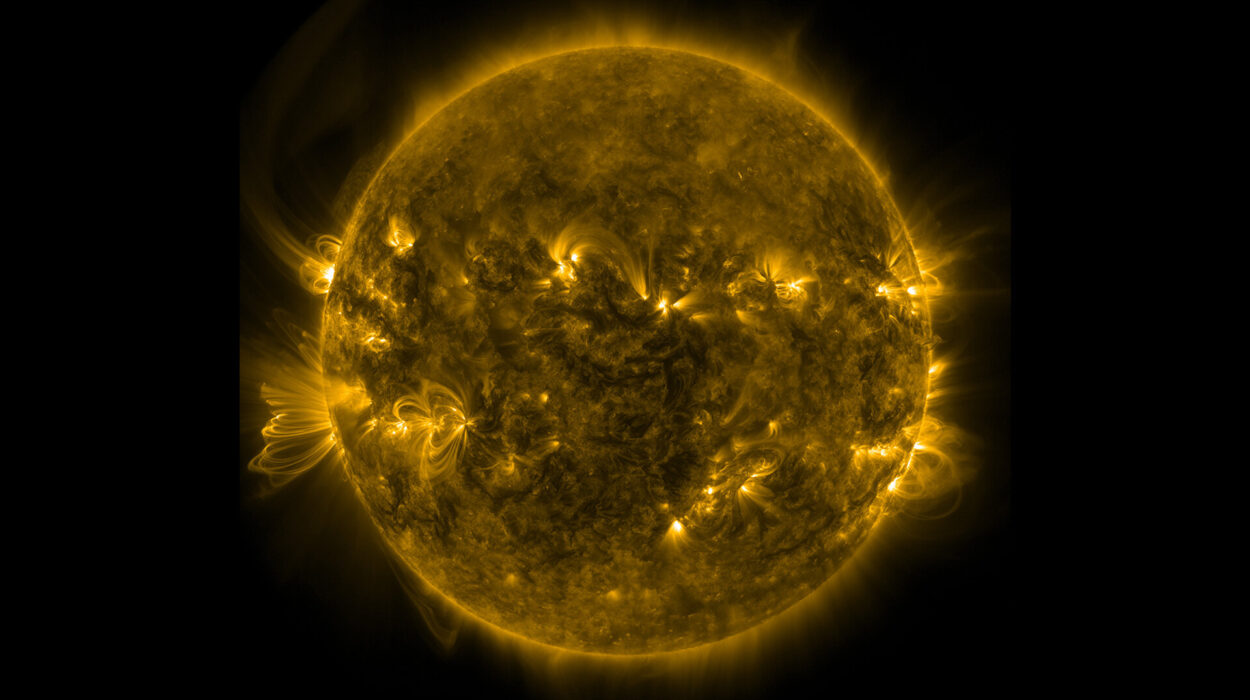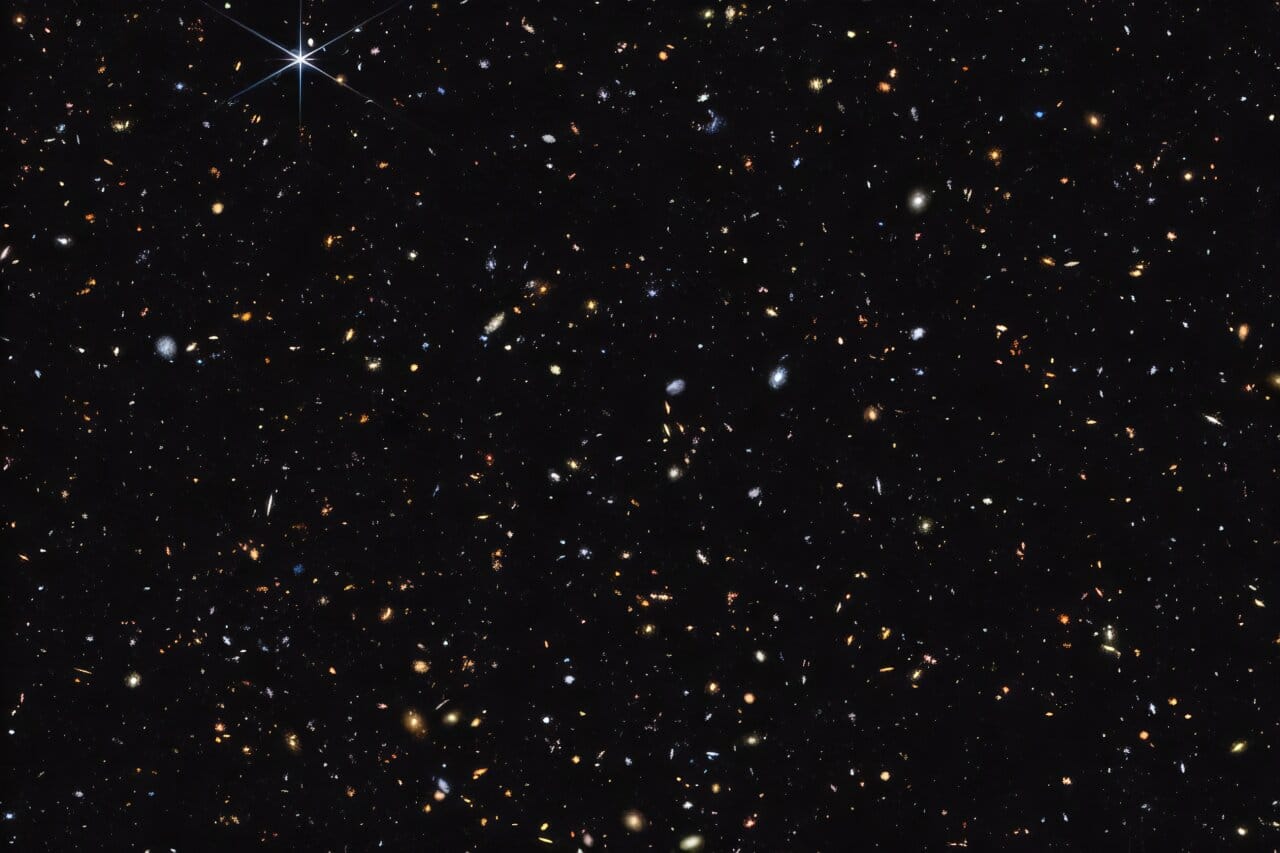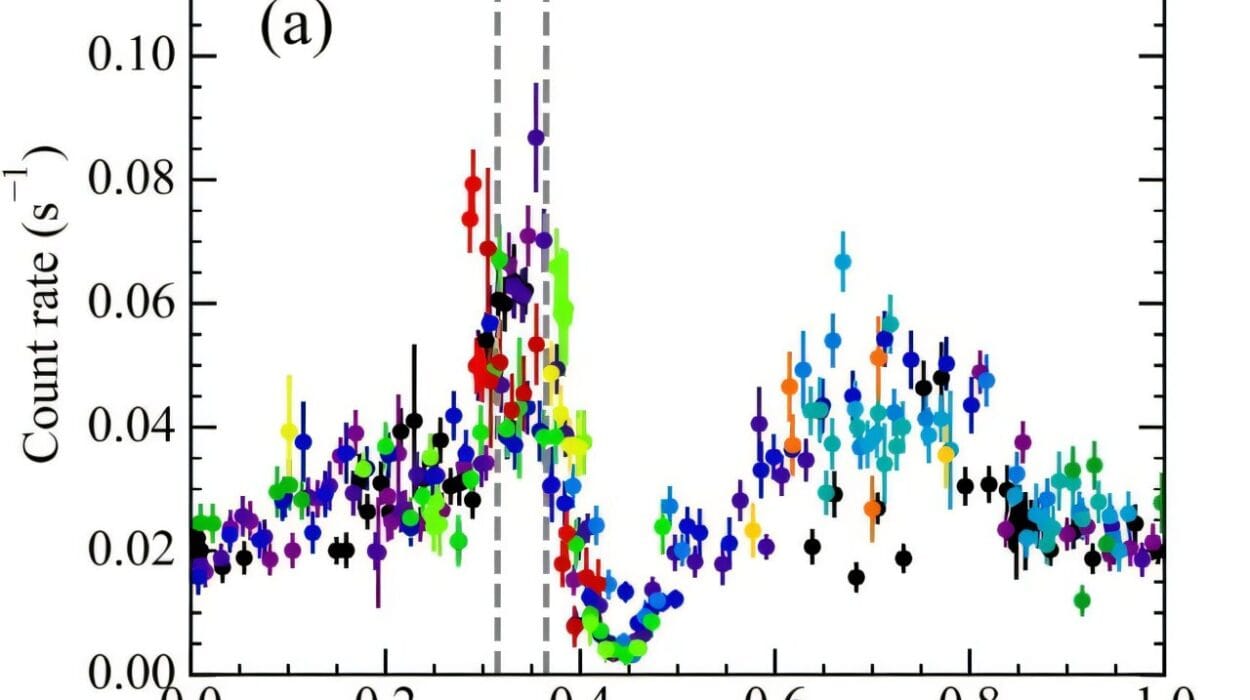High above our heads, orbiting aboard the International Space Station, a powerful X-ray telescope quietly peers into the cosmos. Known as NICER—the Neutron Star Interior Composition Explorer—it was originally designed to study the ultra-dense remnants of exploded stars. But in a recent and extraordinary campaign, it turned its eyes to something altogether different, and no less spectacular: a star shredded by a supermassive black hole.
This event, called IGR J12580+0134, is no ordinary celestial drama. Occurring a mere 59 million light-years away, nestled in the spiral galaxy NGC 4845, it represents the closest tidal disruption event (TDE) ever observed. And with NICER’s precise X-ray vision, astronomers have captured some of the most detailed clues yet about what happens when a star is torn apart at the edge of a cosmic abyss.
The findings, presented on April 17 on the preprint server arXiv by a team led by Ashkbiz Danehkar of Eureka Scientific, don’t just deepen our understanding of this specific event—they may change how we view the intimate relationship between black holes and the galaxies they inhabit.
When Stars Meet Their Doom
To understand the significance of IGR J12580+0134, one must first grasp the extraordinary nature of tidal disruption events. These cataclysms occur when a star wanders too close to a supermassive black hole—those monstrous gravity wells that lie at the hearts of galaxies. As the star approaches, it encounters intense gravitational gradients: the black hole’s pull is vastly stronger on the near side than the far side. The result? The star is violently stretched, torn, and ultimately shredded—a process known as spaghettification.
This torn-apart material doesn’t fall into the black hole immediately. Instead, the stellar remnants whirl around it, colliding and heating up to millions of degrees. These collisions dissipate energy, and eventually, some of the matter forms an accretion disk—a bright, swirling halo spiraling into oblivion. The entire process can light up the heart of a galaxy, briefly turning an otherwise quiet black hole into a blazing beacon visible across vast distances.
For astronomers, TDEs are cosmic laboratories. They provide rare and precious insights into how black holes grow, how matter behaves under extreme gravity, and how galaxies evolve over time. And thanks to NICER, IGR J12580+0134 has become a gold mine of information.
A Glimpse Back to 2010
This story begins not in 2023 but in late 2010, when astronomers first detected a sudden X-ray outburst in NGC 4845. At the time, it was traced to IGR J12580+0134—a TDE caused by the disruption of a substellar object. But this was no ordinary star.
Calculations suggested that the victim was likely something more akin to a massive planet or a brown dwarf, with a mass between 14 and 30 times that of Jupiter. This unfortunate object had strayed too close to a black hole weighing approximately 300,000 solar masses. The ensuing fireworks gave scientists their first tantalizing look at this relatively nearby event.
Over the following years, observations with various X-ray telescopes provided snapshots of IGR J12580+0134’s evolving behavior. Yet a complete picture was still out of reach—until NICER entered the scene.
NICER’s Return to a Cosmic Crime Scene
Between March 2023 and February 2024, the team led by Danehkar trained NICER’s instruments on NGC 4845, hoping to catch lingering or recurring signals from the TDE more than a decade after it occurred. They also drew on data from ESA’s XMM-Newton satellite, an X-ray observatory with complementary capabilities.
Their patience paid off.
NICER detected a series of X-ray brightening flares between March and June 2023. Though much fainter than the original 2010 outburst, these flares offered clues that the black hole was still feeding—albeit feebly—on the stellar debris, or perhaps on surrounding gas clouds disturbed by the earlier disruption.
By early 2024, the brightness had dimmed again. This kind of variability is precisely what astronomers seek: it hints at complex physical processes at work near the event horizon, from intermittent accretion to changes in the geometry or orientation of leftover matter.
Peering Into the Emission: Two Faces of X-ray Light
What made the NICER data particularly revealing was not just when the X-rays arrived—but what they looked like.
The team identified two distinct spectral components in the TDE’s emission. The first, and dominant, was a power-law spectrum that varied with time. This component showed signs of heavy absorption, likely caused by dense clouds of gas close to the black hole, perhaps remnants of the disrupted object itself. As this component brightened, it provided a time-resolved map of the central engine’s activity.
The second spectral component was more subtle but no less intriguing. It bore the signatures of thermal emission from collisionally ionized plasma—hot, thin gas that had been violently energized. This could point to a wind or jet—streams of particles being ejected at near-light speeds from the black hole’s poles. If confirmed, it would offer a vital clue to how even modest black holes can generate powerful outflows that shape their galactic environments.
Black Hole on a Diet: A Low-Luminosity AGN?
Perhaps the most provocative implication of the NICER findings is what they suggest about NGC 4845 itself.
The continued, though faint, X-ray activity hints that the galaxy may host a low-luminosity active galactic nucleus (AGN)—a black hole that feeds slowly and quietly, rather than roaring with quasar-like ferocity. These kinds of AGNs are harder to detect, but they may be far more common than their brighter cousins. Understanding their behavior is essential for modeling black hole demographics across cosmic time.
The idea that a TDE can trigger or modulate AGN activity is gaining ground. In some cases, the influx of gas from a shredded star may serve as fuel, “restarting” a dormant black hole. In others, the disruption may simply reveal an otherwise hidden AGN, like turning on a flashlight in a fog.
In this context, IGR J12580+0134 becomes more than a curiosity—it becomes a test case for the interplay between stellar death and black hole life.
A Call for Long-Term Cosmic Vigilance
The team’s conclusions emphasize the need for long-term monitoring of TDE host galaxies. Events like IGR J12580+0134 don’t play out in weeks or months—they unfold over decades, revealing new features and puzzles as time goes on. Today’s faint flare could be tomorrow’s sudden eruption. Without patient, sustained observations, we risk missing the full story.
That’s where missions like NICER, XMM-Newton, and future telescopes such as Athena and the Lynx X-ray Observatory come into play. With better sensitivity and longer baselines, astronomers hope to catch more of these rare events—and watch them evolve with exquisite detail.
The Big Picture: Why TDEs Matter
At first glance, a tidal disruption event might seem like an isolated tragedy—a lone star meeting its end in the jaws of a black hole. But each such event is a probe, a natural experiment that allows astronomers to test the extremes of physics.
TDEs provide insights into:
- Accretion physics under strong gravity,
- The dynamics of stellar orbits near supermassive black holes,
- The formation and stability of accretion disks,
- The conditions that trigger or quench AGN activity,
- And even, in some cases, the presence of intermediate-mass black holes still eluding direct detection.
And because IGR J12580+0134 is the closest known TDE, it offers a rare opportunity to study these phenomena up close. Every photon it sends us—however faint—helps refine our models of how galaxies and their central black holes co-evolve.
Conclusion: Echoes from the Edge of Gravity
In the vast silence of space, where time flows differently and gravity bends reality, a forgotten star died a spectacular death in the arms of a black hole. Its final scream, flaring across the X-ray spectrum, traveled 59 million years through darkness until it reached our detectors.
Thanks to NICER and the dedicated scientists who operate it, that scream was heard—and deciphered.
IGR J12580+0134 is more than an astronomical record-holder. It’s a reminder that the universe is constantly in motion, constantly surprising, and always ready to reveal its secrets to those who look closely enough.
And as we continue to listen to these cosmic echoes, we are not just learning about black holes—we are learning about the hidden heartbeats of galaxies, the forces that shape the universe, and perhaps, ultimately, the fate of stars like our own.
Reference: A. Danehkar, IGR J12580+0134: The Nearest Tidal Disruption Event and its Faint Resurrection, arXiv (2025). DOI: 10.48550/arxiv.2504.18558
